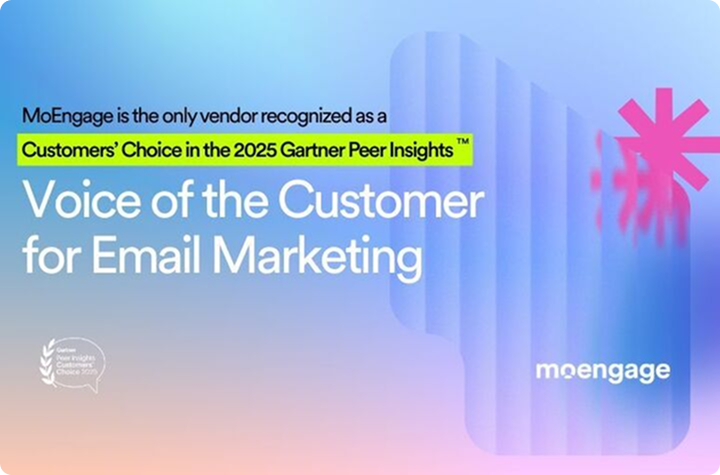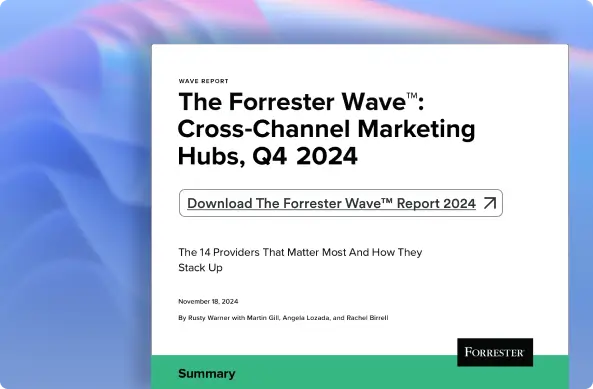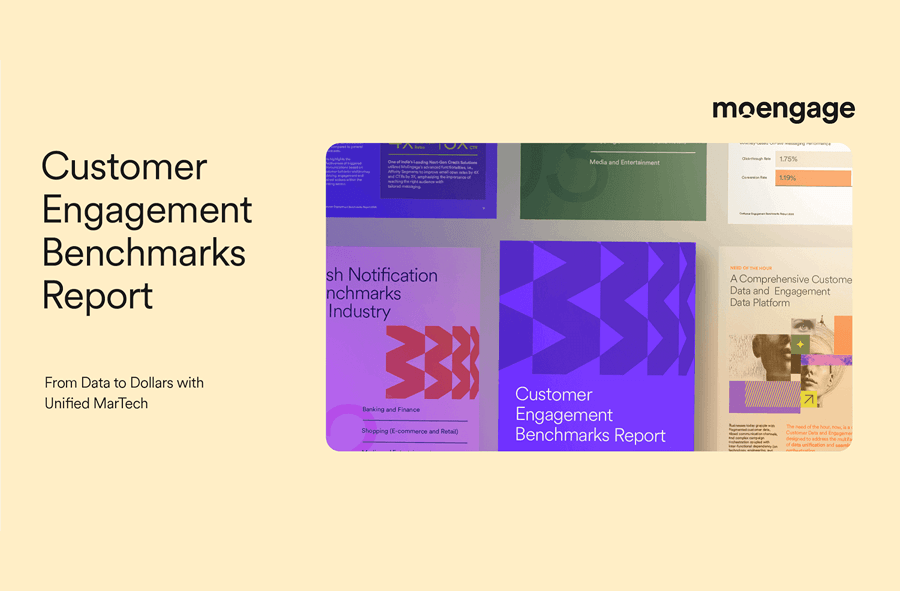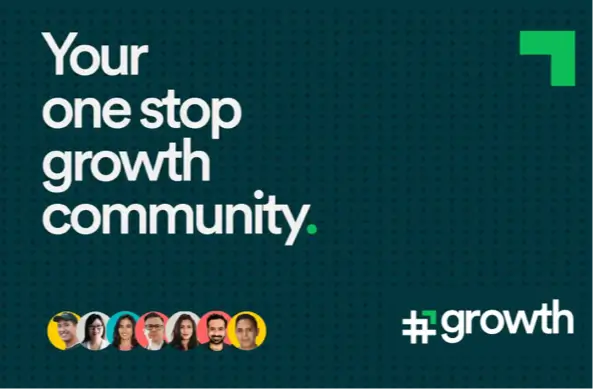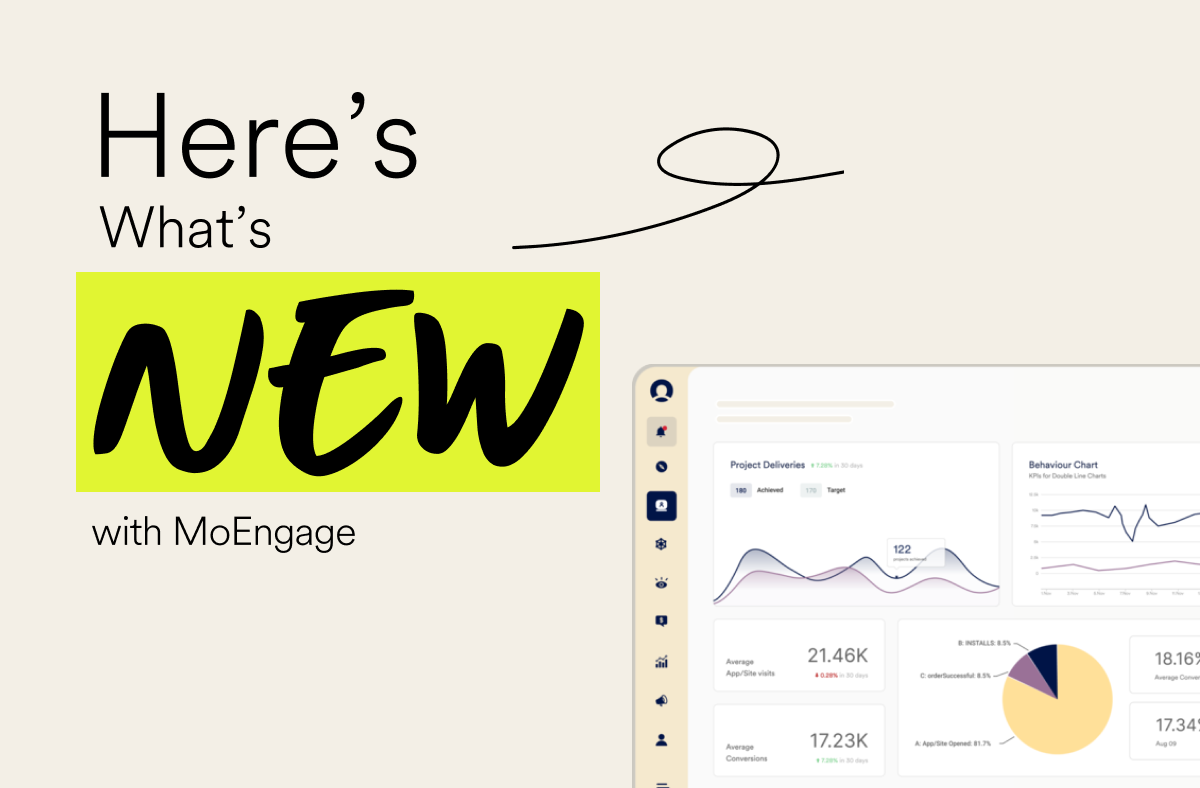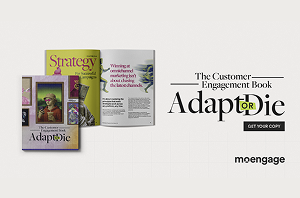Email Marketing Guide: Everything You Need to Know
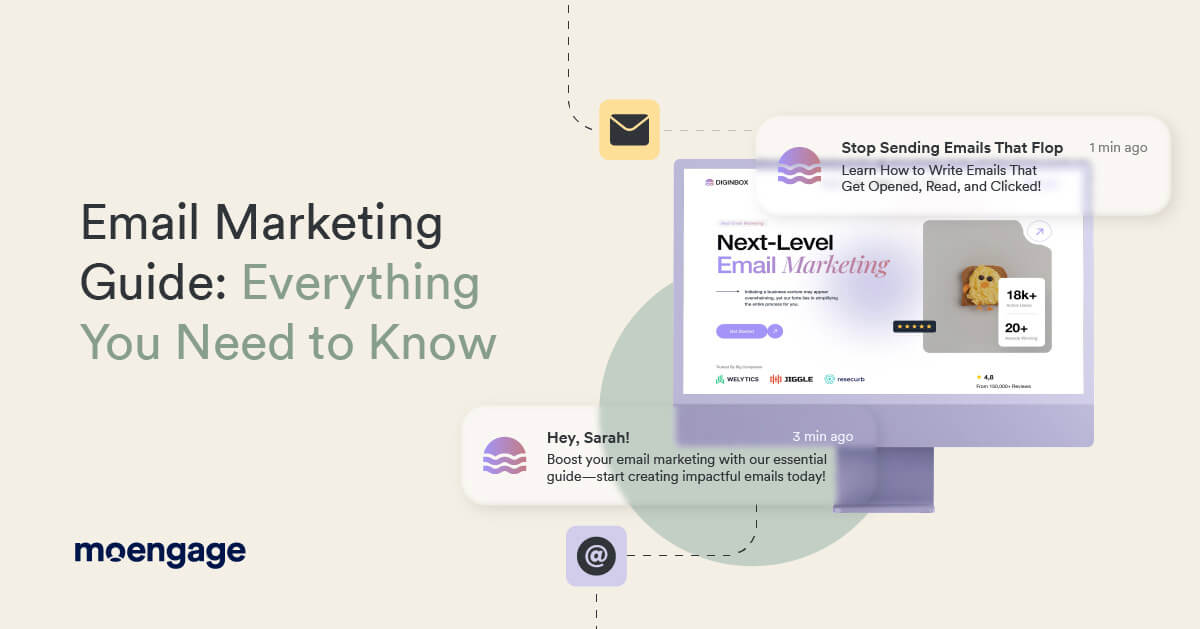
Yes, we know—email marketing is the OG of digital marketing, the classic that has weathered every algorithm update, social media boom, and influencer trend.
Yet, here’s the kicker: it’s still one of the most effective tools for driving ROI. According to a HubSpot report, email marketing generates an average ROI of $36 for every $1 spent, making it a no-brainer for businesses.
But why, in an age dominated by short-form video trends and AI-generated content, does email remain king? If you’re rolling your eyes thinking, “Oh great, another email marketing guide,” stick with us.
We’re not here to rehash the basics—you’ve read those before. Instead, we’re diving into what actually makes email marketing work in today’s oversaturated digital space and how you can rise above the noise by improving your email marketing engagement.
What is Email Marketing?
Email marketing is an online marketing strategy where companies send targeted digital messages to interact with customers, market goods, and develop relationships. Email marketing serves as the most intimate one-to-one conversation you can have with your audience—minus the awkward small talk.
It could be a lead nurturing email, announcement of a product launch, or sharing a discount. Email allows you to speak directly, personally, and in a measurable manner with your audience.
Does email marketing still work?
Email marketing still works as an effective marketing technique, as its flexibility and quantifiable outcomes keep it a foundation of effective marketing. Even through the emergence of social media and other new digital channels, email is still one of the most dependable and affordable marketing tools.
When talking about the benefits of email marketing, email generally has higher engagement rates compared to most social media channels. Why? Because it delivers a personalized message directly to the recipient, often in a format tailored to their preferences.
Of course, email marketing has its own advantages and disadvantages—overcrowded inboxes and spam filters; meaning you need to be smarter about your approach. But with the right strategies—like segmentation, automation, and A/B testing (all of which you’ll learn in this email marketing guide)—email marketing can achieve incredible results.
So, does email marketing still work? Absolutely. The key lies in evolving with the times and staying relevant to your audience’s needs.
7 Types of Emails Used in Marketing Campaigns
Before we move forward, let’s look at some types and examples of email marketing, diving into their relevance and the best times to use each type.
1. Promotional emails
B2C email marketing heavily relies on promotional emails that seek to increase sales, drive participation rates, as well as signal the arrival of fresh goods into the market.
Such emails are very straightforward and call for immediate action, as most of the time, they are accompanied by discounts or a special offer for one customer.
Examples include those that state “Flash Sale!” and create urgency or “Limited Time Offer!” but make people act immediately – these work well when aligned with special occasions or based on a customer’s behavior on your website or mobile app as a way to entice people who may be browsing or interested in making a purchase.
2. Welcome emails
The first email sets the pace for what kind of relationship you will have with every new subscriber. This is your opportunity to provide a positive experience while introducing subscribers to your brand.
These email types are often opened frequently because they arrive when people are still very curious about them. The email can be very simple by expressing words of thanks, or they can be more in-depth or strategic by offering an exclusive welcome proposition or featuring a link to useful content or offers– this is all sent right away after the registration, and matters for building a trusting relationship with subscribers.
3. Abandoned cart emails
Have you ever gone shopping in a supermarket and added some items to your basket, and then left without paying? Well, abandoned cart emails aim to address this behavior by helping customers remember their incomplete purchases.
They may incentivize a purchase by offering a limited-time discount with language that expresses urgency like, “Hurry up before we run out of stock!” — such emails can re-activate a customer’s interest in buying again.
If your marketing is in the retail and Ecommerce space, our list of these abandoned cart email templates can help you get started.
4. Product recommendation emails
When you go through a personalized product recommendation email, you may feel special, as if someone is speaking directly to you.
These emails tend to recommend products based on what customers have been browsing online, in-app, or in-store. For example, if someone purchases a coffee maker, it would make sense to advise them on some high-quality coffees or related items that you sell.
5. Loyalty program emails
The best customers should receive loyalty program emails that make them feel recognized. Reminding about accrued points, unique offers, and special events for VIP customers helps keep your brand front of mind while also resulting in increased customer loyalty.
Transactions shouldn’t be the focus here; the goal is building relationships with active and engaged buyers. These types of messages are particularly effective when sent after a customer makes a large purchase or conversely, if their purchasing frequency has gone down, as a way to re-engage them.
Check out our guide to improving customer loyalty through marketing to learn more about how you can market your way into long-term loyalty.
6. Emails to re-engage customers
On that note, specifically tailored re-engagement emails are effective for customer who go quiet and become inactive. These messages contain statements such like “We miss you!” and incentives to reignite their interest.
Offering a timely discount or personalized reminder in a re-engagement email may be effective in converting idleness into renewed enthusiasm by reminding them about what they liked about your products or services in the first place.
7. Seasonal Emails
Seasonal and holiday emails, like those sent around the winter holidays, going back to school, or the 4th of July, can be a way to engage customers and keep the conversation going. As seasons shift, so do the wants and needs of your customers.
These campaigns are critical for showcasing to your customers how well you understand their preferences, leading to increased engagement and loyalty. Keep reading this email marketing guide to learn how you can start the process.
Note: Another important kind of email is a transactional email. Even though they aren’t exactly part of campaigns, transactional emails are 1-to-1, non-promotional automated messages triggered by a certain action taken by the customer. They may share payment or order confirmations, account information, shipping timelines, or password resets. You need to use a transactional email platform to create, schedule, and manage such emails fast.
How Does Email Marketing Work & How Do You Get Started?
Email marketing might seem a bit overwhelming at first, but the truth is, it’s much simpler than it looks. The following steps will break down how email marketing works and help you create a solid plan to get started.
1. Build and grow your email list
Your campaigns depend on your mailing list. Otherwise, who would you market to? Begin building a high-quality list as follows:
- Create Sign-Up Forms: Place them prominently on your website—consider homepage, blog, and checkout pages.
- Pop-Ups and Exit-Intent Forms: Use these to grab attention before visitors leave your site.
- Lead Magnets: Offer something valuable in exchange for email addresses, like an eBook, discount code, or white paper. Tools like OptinMonster make this easy.
- Social Media: Promote your sign-up forms on platforms like Instagram, Facebook, and X to reach a broader audience.
Remember to keep on going even if there is a massive initial turnout of subscribers. Offer them interesting materials and bonuses to keep them interested over time. If you need more help at this step, review our guide on how to build an email list.
2. Choose an email marketing platform that works for your needs
The role of an email automation solution is to facilitate the creation, overseeing, and measurement of email promotions. With this in place, you will only need to select the perfect email platform for stress-free email marketing. Look for tools that have:
- Customizable Email Templates: Drag-and-drop builders save time and effort.
- Segmentation & Personalization Tools: Use email personalization tools to send tailored emails based on customer behavior, location, or purchase history.
- Automation Features: Save time with triggered emails that engage your audience without manual effort.
- Analytics & Reporting: Get real-time insights into open rates, clicks, and conversions to refine your email marketing strategy.
- Integration Options: Ensure compatibility with your CRM, eCommerce platform, or website tools.
We’ve put together a list of popular email marketing software providers, but the key is to ensure you select a platform that matches your business objectives and requirements.
3. Define your goals
Before pressing “send,” know exactly what you’re trying to accomplish. Do you want to:
- Increase sales?
- Drive more website traffic?
- Nurture potential leads?
- Improve customer retention?
Having well-defined objectives should improve your email program’s chances of delivering on those goals.
4. Segment your audience
Not all customers are the same, so why send similar emails to everyone in your database? Email segmentation allows personalizing customer experience within separate target groups.
Examples of Segments:
- New subscribers
- Loyal customers who buy frequently
- Cart abandoners
- Seasonal shoppers
If you increase the level of personalization in your emails, this will lead to higher engagement rates. Segmentation guarantees that your communication reaches the intended recipients when it’s supposed to.
5. Create compelling content
Ensure that the information in your email is interesting to those who read it. Consider the following hints when creating an email newsletter or any other kind of email campaign:
- Subject Line: Keep it brief, captivating, and urgent.
- Body Text: Concentrate on advantages, not characteristics. In what way will your proposal solve a problem or be useful?
- Visuals: Put attractive pictures, but not too many.
- Call-to-Action (CTA): Employ clear, short CTAs such as “Shop Now” or “Learn More.”
6. Automate Your Campaigns
Business-to-consumer marketers cannot afford to ignore automation. Here is a list of some automated emails that you should always send:
- Welcome Series: A warm introduction to your brand.
- Abandoned Cart Emails: Recover lost sales with timely reminders.
- Post-Purchase Emails: Say thank you and encourage repeat purchases.
With automation, you can save time, keep everything regular even when your mailing list grows up, and make sure that there is no difference between one subscriber and another.
7. Track and Optimize
Data is your best friend in email marketing. Measure open rates, click-through rates, conversions and determine what is effective. Improve your email by changing subject lines, email formats, and CTAs through A/B testing.
Email Marketing Metrics, Measuring ROI, & Industry Benchmarks
Did you know that 73% of marketers consider email to be the most effective channel for driving results?
To give you more of such information bombs, we’ve compiled a list of email marketing statistics for three major industries — retail and Ecommerce, banking and financial services, and media and entertainment.
We’ve also analyzed 17.3 billion emails to establish email marketing benchmarks for B2C marketers. For example, we found that personalized emails can achieve between 2.8x and 300.7x conversion rates, compared to non-personalized ones.
Top 5 email marketing metrics to track
It’s vital to understand what aspect of email performance each email metric measures, and which metrics matter most for your brand. Here are five of them to give you a head start:
- Open Rate: Customers open an email if they find the subject line intriguing enough. So if your open rate is lower than the average email open rate of 28.6%, it means your subject lines or content isn’t enticing your customers. That’s why open rates are crucial to track.
- Deliverability Rate: Even after creating engaging subject lines, your open rates might be low if your emails land straight in spam. Without tracking the email deliverability rate, you won’t know for sure if your emails are even getting delivered to the customer’s inbox, instead of their spam folder.
- Unsubscribe Rate: You need to analyze how many customers want to leave your email subscription list (Gmail now lets customers manage their subscriptions, by the way). A high unsubscribe rate means they either don’t find your emails useful or engaging enough. That’s your cue for improving your content, but on the bright side, your email list gets cleaned out of inactive and uninterested subscribers.
- Spam Complaint Rate: This is another measure of how many subscribers find your emails irrelevant or annoying. A high spam complaint rate indicates that your emails have a greater chance of landing in the spam folder. For this reason, keep monitoring your spam complaint rate to ensure it’s always below 0.1%.
- Revenue Per Email (RPE): If you want to know which of your individual emails has driven the most revenue and therefore been the most effective, you need to analyze RPE. It gives you an idea of the budget to be set for your future email marketing campaigns.
Dig into even more email marketing metrics you should analyze and monitor to assess the performance of every email campaign.
How to set up an email marketing dashboard
The most efficient email dashboards are the ones that show you all the data in one place, instead of making you jump between tools. You need to keep this in mind while setting up the dashboard, following these steps:
- Conduct an audit: Find out what tools currently track your customers’ behavior, purchases, engagement, and other data.
- Identify the metrics: Define the metrics you need to measure for your campaign goals.
- Structure the dashboard: Map the metrics to the different stages of the customer journey.
- Set up data syncing: Sync all the data among your CRM, email analytics tools, and email marketing platform.
- Automate reports: Set up alerts for irregularities in your email marketing campaigns. Auto-schedule weekly or monthly reports to be sent to stakeholders.
- Train your team: Create clear documentation and schedule training sessions to familiarize your team with your new dashboard.
Learn what features an email dashboard should have, the various kinds of dashboards, and which dashboard software you can use to analyze performance in this guide on email marketing dashboards.
How to use email marketing analytics tools to measure campaigns
Before selecting and using any email analytics tool, make a list of the features that would work best for your brand’s needs and goals. Whether detailed campaign insights and custom dashboards or error breakdowns and A/B testing, decide how you’re going to use the tool for measuring campaign performance. Once the use cases are in place, you can get started with setting the scene to use the tool.
- Conduct a martech audit: Find out all the sources for your data, whether all your tools can be synced, and if data duplications or irregularities exist.
- Define KPIs and metrics: Determine which email metrics and KPIs you’ll need to measure your campaign ROI.
- Configure data flow: Test whether data flows smoothly and accurately across platforms.
- Choose the right tool: Select an email marketing analytics tool depending on your priorities, such as AI-powered features, a CRM ecosystem, advanced data visualization, or ease of use.
- Prepare documentation: Make it easy for your team to use the analytics tool by building detailed documentation and scheduling weekly training sessions.
The next step is to evaluate the best email analytics tools and choose one that works for your team.
With these tools, improving your email open rate and other metrics gets easier. Let’s look at some of the best practices and strategies you can use to boost your email performance.
High-Level Email Marketing Strategy & Best Practices
We’ve shared a full breakdown of email marketing best practices to help you understand what to keep in mind when sending email campaigns. You won’t be disappointed if you need a complete guide that explains email marketing strategy, either.
Nevertheless, we’ve covered some high-level email marketing strategies and best practices in this guide.
1. Master the art of crafting engaging subject lines
More than 82% of consumers don’t open emails. That’s unfortunate, but you have to face the truth sooner or later: your subject lines might not be engaging enough for customers to open the emails.
What’s the proof? Well, at least 47% of recipients consider the subject line when deciding whether they should open an email or not.
So what can you do to solve this issue? The answer is simple — put yourself in your customer’s shoes and think of what would make you open an email from a brand. Something that would make you feel… excited? Motivated? Curious?
Try to bring out any one of the following emotions and feelings in your subject lines, and you’ll be good to go:
- Fear of Missing Out (FOMO)
- Personalization
- Curiosity
- Humor
- Positivity
- Incentive
- Greed
- Helpfulness
- Simplicity
While you’re at it, here are some of the best email subject lines to boost your open rates and give you more ideas.
2. Know when the best time to send an email is (based on your industry)
When is the best time to send an email? Although it varies by industry, the most effective time on average is between 8AM and 11AM on weekdays, especially Tuesdays and Thursdays.
To find out the specific email cadence for your campaigns, start with creating and mapping the customer journey. It’s a good way to know where your target audience usually starts and how they move toward their destination.
Next, segment your email list so you can adjust your cadence to each segment’s preferences. Don’t forget to tailor the content to each segment to make it relevant. A/B testing can help you figure out whether your email cadence and timing are working. Another best practice is to ask your subscribers what their preferences would be in terms of frequency.
But cadence doesn’t matter if your emails don’t land in your customers’ inboxes in the first place. To ensure email deliverability, authenticate your email domain with SPF, DKIM, and DMARC. Then, build a clean email list by periodically removing invalid and inactive subscribers. Avoid spammy language and all-caps headlines, and don’t load your customer relationship emails with 10 images and links. Lastly, comply with regulations like the General Data Protection Regulation (GDPR) and CAN-SPAM.
3. Automate your email marketing campaigns
Email marketing automation is now a must-have. Decide whether you need to maximize outreach and engagement, improve operational efficiency, increase campaign impact, or all of the above.
Then, choose the right email marketing automation software, depending on the features and capabilities you need for your campaigns. After identifying the campaigns you need to automate, set up automated triggers and workflows, and test if they’re working fine.
Looking at some examples of automated email marketing campaigns might help you understand how they’re supposed to work.
4. Build out your email marketing customer journey
To set up a series of automated emails throughout your customer journey, you need to map your email marketing strategy to the customer journey. It starts with understanding and segmenting your customers. Otherwise, you can’t define the different touchpoints where you’ll have to send email campaigns for each segment and at each stage of the journey. At the same time, take care not to spam your customers with a string of emails at every touchpoint.
Once the email sequences are set up, remember to analyze the entire process and optimize the emails for better performance on different devices. Also, keep optimizing the email marketing customer journey based on customer feedback.
5. Utilize email marketing templates
Email marketing templates make sending campaigns much easier. A good template should be responsive and have a file size of 10 to 25MB, organized layouts, consistent formatting, and intuitive CTAs.
Using a visual content hierarchy in the templates ensures the recipients can scan your emails. Make the templates accessible to all, and prioritize spacing. You can’t go wrong if you follow email design best practices while building templates for your brand.
6. Utilize drip email campaigns
When you need to nurture customer relationships and drive engagement effortlessly, email drip campaigns are your go-to strategy. These can range from welcome and engagement emails to lead nurturing and abandoned cart emails. Even though a standard drip campaign has 3-7 emails, you can experiment to find the right number for your audience, industry, and business goals.
Drip email marketing software makes it easier to set up drip campaigns. When evaluating any software platform, make sure it comes with a journey builder, personalization engine, real-time analytics, behavioral targeting, and AI-driven predictive segmentation. Have a checklist ready to ask questions during any software demo.
7. Improve your email sender and domain reputation
Email sender reputation measures how trustworthy your brand is as an email sender. Based on email engagement, your sending history, email list quality, and spam complaint rates, it determines whether your emails will make it to the customer’s inbox or be sent straight to their spam folder.
That’s why you should keep a check on your email sender reputation scores. If the score’s low, you can improve your reputation by managing a clean list, using double opt-ins, and tailoring your email cadence based on each segment’s time zone and engagement rate.
8. Periodically manage your email list
Email list management includes acquiring new email addresses and cleaning the list of non-responsive subscribers. Always remember to comply with global and regional data collection rules and regulations. Be transparent with your customers about what kinds of emails you’ll send them, how many, and how often.
While collecting email addresses, ensure the customers have given their explicit consent to share their email IDs, and tell them how you’ll use those. To steer clear of deliverability and domain reputation issues, never buy email lists, no matter how unsuccessful your attempts are at building lists organically.
9. Avoid common email marketing mistakes
If you want your email campaigns to succeed, you can’t afford to make critical email marketing mistakes. Remember not to use any generic, over-the-top sales language in your emails that the recipients might find off-putting. You have sales follow-up emails for that.
Adding too many images inside your emails can slow down load time, while sending email blasts to all your customers rather than segmenting them is a surefire way of getting marked as ‘spam’.
Staying on top of all these email marketing best practices and strategies can help you effectively reach and engage with your customers. But none of this is likely to come about without the right email marketing tool in your tech stack.
Email Marketing Tools and Services: Tech to Power Your Strategy
Email marketing might feel like a straightforward task—write, send, and watch the results roll in.
But behind every successful campaign is a suite of email marketing tools and services working tirelessly to amplify your efforts.
From automation to analytics, our email marketing guide shows you how technology fuels modern email marketing.
The role of email marketing tools
Email marketing tools are more than just platforms to send emails—they’re your command center. With these tools, you can make work easier, accurate, and be able to increase the intensity of labor safely when required.
- Automation: Email automation tools like MoEngage can help brands automate everything from welcome sequences to abandoned cart reminders, saving you time while delivering timely, personalized messages.
- Segmentation: Platforms let you categorize your audience based on behavior, preferences, or demographics, ensuring that each email is hyper-relevant.
- Personalization: Technology enables dynamic content, so you can tailor subject lines, product recommendations, or even full email layouts to individual recipients. In case you’re in the retail and Ecommerce industry, these Ecommerce email personalization strategies may come in handy.
Integration with other marketing channels
Email doesn’t work in isolation. Advanced email tools integrate seamlessly with other platforms like CRM systems, e-commerce sites, and social media, enabling cross-channel marketing strategies.
For example, syncing email campaigns with Facebook Ads for retargeting customers who opened but didn’t click. Or sending personalized product recommendations based on purchase history.
A/B testing
Gone are the days of guessing what resonates with your audience.
Many tools support A/B testing, letting you experiment with things like subject lines, design layouts, personalized content, or send times to find the winning combination.
Compliance made easy
With laws like GDPR and CAN-SPAM, staying compliant with your email campaigns is non-negotiable. Most email marketing platforms simplify compliance with features like opt-in forms, unsubscribe links, and customer consent tracking.
AI and machine learning
Emerging technologies like AI and machine learning are revolutionizing email marketing.
What They Bring to the Table:
- Predicting the best time to send emails for each recipient
- Crafting AI-generated subject lines that maximize open rates
- Analyzing recipient behavior to optimize future campaigns
How to Win at Email Marketing This Year With MoEngage
Email marketing shouldn’t just be a checkbox in your marketing strategy. To stand out this year, you need to make email a vital piece of a larger puzzle. So to truly win, you need to start thinking beyond just inbox — which is why you need this email marketing guide!
Today’s customers interact with brands across multiple channels, from push notifications to SMS to social media.
By weaving email into a cross-channel strategy, you can create a customer journey that feels less like marketing and more like a conversation.
So, the winning formula this year is — Precision + Personalization + Presence. Nail these three, and you’ll turn passive recipients into active loyalists.
Are you wondering how to make it happen?
Now is the right time to look over MoEngage’s Email Marketing Solution and discover how our advanced tools can help you craft campaigns that deliver results—and impact. Your next winning strategy is just a demo away.



